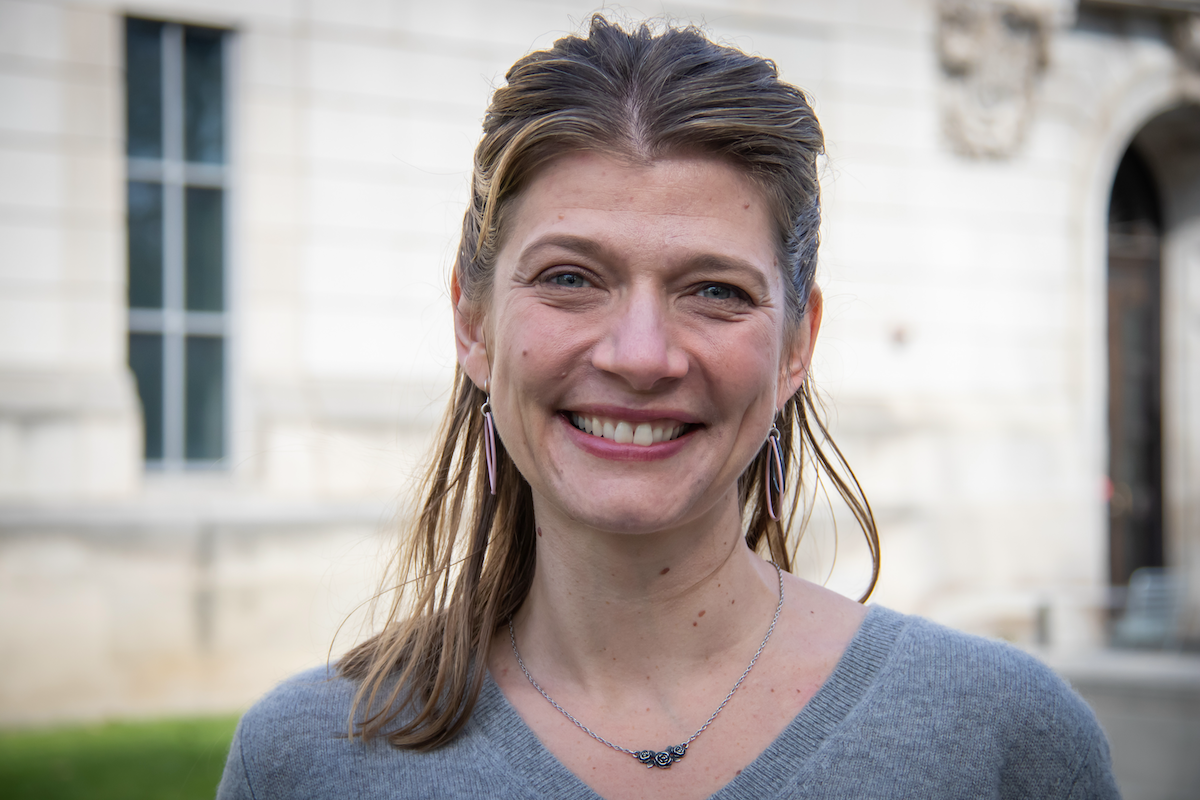Rebekah Gayley, project manager of Framework 3.0 dives into her background in campus planning and her role in the Framework 3.0 planning process.
- When did you start working for The Ohio State University? Has your role changed since you started here?
I started at Ohio State in April 2013, so I’m coming up on my 10-year work anniversary. I’ve worked at Planning, Architecture and Real Estate (PARE) for all of those 10 years but have taken on projects of increased scope and responsibility since beginning. I worked on Framework 2.0 in a support role and have taken on more responsibility with Framework 3.0 as its project manager.
- What is your experience with campus planning?
I received my master’s degree in urban affairs and public policy, with a focus on community planning. I was able to find a job quickly as a project manager with a planning firm that focuses almost exclusively on higher education projects. I was part of developing master plans for smaller colleges and universities across the US – Washington University, UNC Charlotte, Swarthmore College, University of Maryland Baltimore. When I moved to Columbus, I saw the position with PARE open and thought that working here would be challenging in the best possible way. Ohio State is by far the most complex campus on which I’ve ever worked.
- What has been your role in the Framework 3.0 process?
From the project start in spring 2022, I’ve been developing the process and schedule to get us to a completed long-range master plan by fall 2023. We hired Ayers Saint Gross (ASG) as our planning consultants, so there’s quite a bit of coordination with them on developing content for meetings and making sure we are meeting our milestone dates. There’s coordination for setting meetings – we had a series of about 30 listening sessions during the summer andfall. This spring, we’ve hosted an in-person design workshop each month that usually entails half a dozen or so individual meetings and workshops during a three to four day period. Public engagement is very important.Working with ASG planners, we’ve arranged for in-person open houses as well as virtual surveys, including ahousing survey that went out to approximately 28,000 people on our campus. There’s also work that I do with our A&P Communications team on updating the website and making sure the Ohio State community is aware of our planning. At a university our size, it’s important to make sure we receive input from the community and tell the story of our planning work in a way that helps those at all levels of the university feel confident about the work being done.
- What has been your favorite part of the planning process?
I love the people-facing sessions, whether those are open houses or design workshops that bring the campus community together. A lot of prep work goes into creating those events, so it’s rewarding to meet people and hear their ideas. I always learn something new from the Ohio State community. A lot of times, someone will start their comments with, “This might be a crazy idea …” or “I’m not a planner, but I’ve always thought …” and then they go on to make an incredibly insightful observation that shifts my assumptions.
- What are you most excited for about Framework 3.0?
We’re in our fourth month of design workshops, and there are so many great ideas circulating. I’m excited for the work we’ll do late spring and summer of refining those ideas into a single plan. We have to layer on so many factors and at a range of scales. This includes ideas like proposed planning from the city for SR-315 or the bus rapid transit loop, development of Carmenton, the new inpatient hospital, all the construction projects that will be wrapping up this year, the evolving nature of research at Ohio State, changes to space needs post-Covid, etc. We have to balance those with our goals to create a thriving, people-oriented campus with high-quality buildings and open spaces. This is a very complex place, and the challenge is rewarding. At the same time, people usually experience the greatest deal of impact from small projects like a lobby renovation or some new picnic tables on the Oval where they can enjoy their lunch. When you can find those small wins, that is equally rewarding.
- How can others get involved with the Framework 3.0 planning process?
Throughout the planning process, we continually engage the university community and provide opportunities for students, faculty and staff to share their insights about campus planning. This includes listening sessions, pop-up feedback opportunities, meetings with representatives from various departments and surveys. We encourage everyone to visit our Framework webpage to learn more about the efforts and for ways they can get involved.
